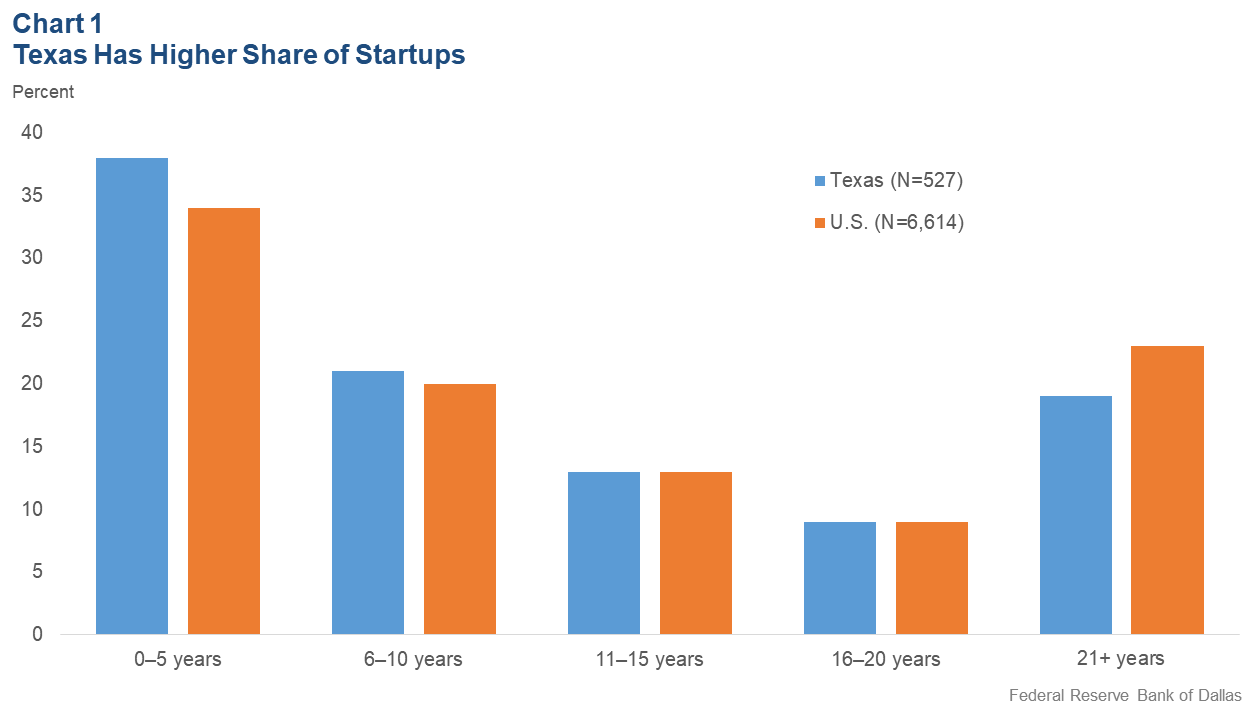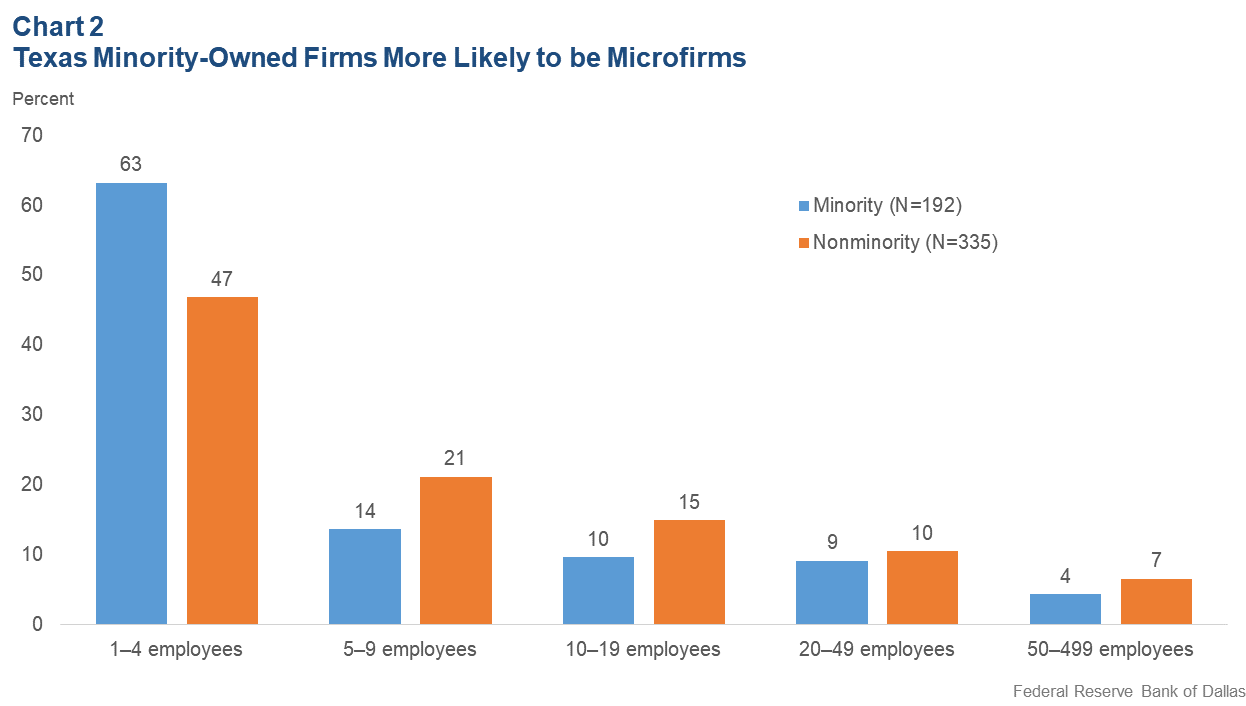Small Business Credit Survey
Demographic Snapshot
The SBCS yielded 527 responses from Texas businesses with 1–499 full-time or part-time employees (hereafter ‘firms’), the highest number across all states in the survey. Texas has a larger share, relative to national peers, of startups, or firms in their first five years of operation (Chart 1).

Sixty-eight percent of firms in Texas reported revenues of $1 million or less, and just 4 percent had revenues of over $10 million. More than a quarter (28 percent) of Texas firms are minority-owned, a full 10 percentage points higher than the national average of 18 percent.[3] Texas also has a smaller share of firms owned by men than the nation (62 percent versus 65 percent), which means it has a slightly higher share of firms than the nation that are either owned by women or equally owned (38 percent versus 35 percent).
In terms of industry, according to Steve Lawrence, executive director of the Texas Gulf SBDC Network, entrepreneurs in Texas continue to launch traditional businesses but with a concentration in food and health care industries. “We’ve noticed an increasing interest in catering businesses, adult day care and elderly home health care services,” he said. “There’s also a growing interest in technology-related businesses, specifically in the development of mobile apps. In the Houston area, the creation of the ‘Innovation Corridor,’ the increase in co-working spaces, and new incubators are all fostering a start-up community in a variety of tech industries.”
Regarding size, most businesses in Texas and the nation are microbusinesses (51 percent and 55 percent, respectively), those with fewer than five employees, including the business owner. Minority-owned firms are more likely to be microfirms than their nonminority counterparts (Chart 2). They are also significantly less likely to be at the next stage of employee growth (five to nine employees). Minority firm owners are more likely to have a master’s, doctoral or other professional degree relative to their nonminority peers (36 percent versus 23 percent) and less likely to have a high school diploma or less (8 percent versus 13 percent).[4]
